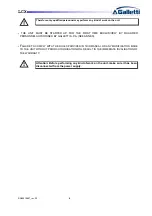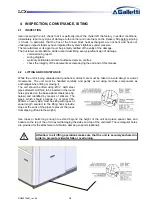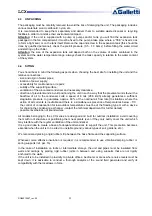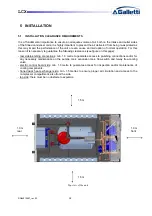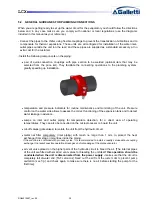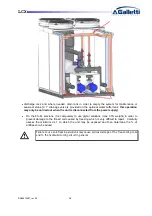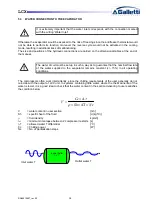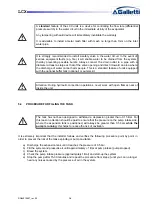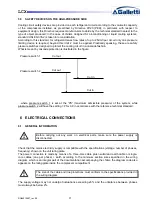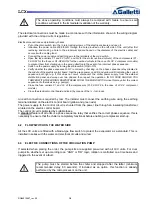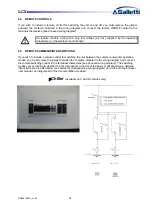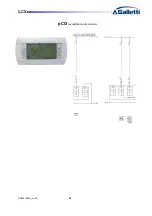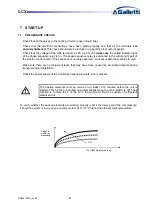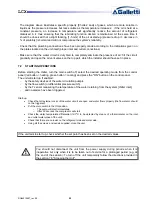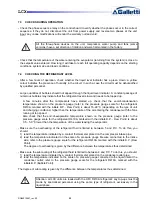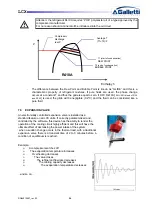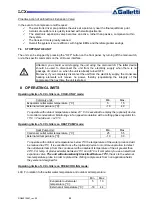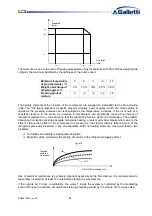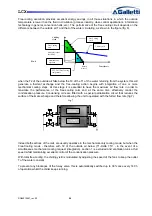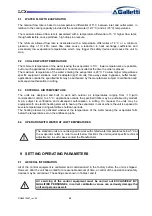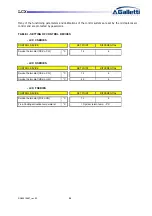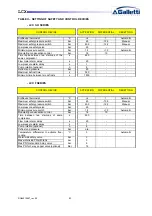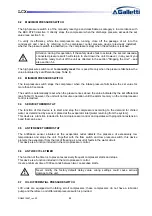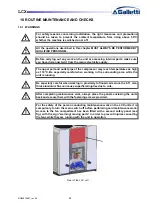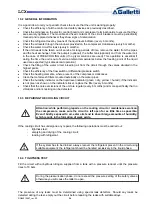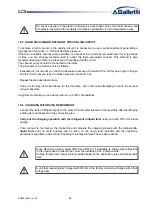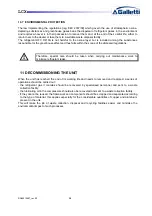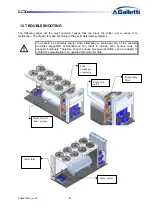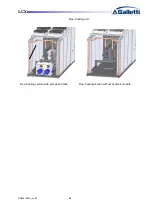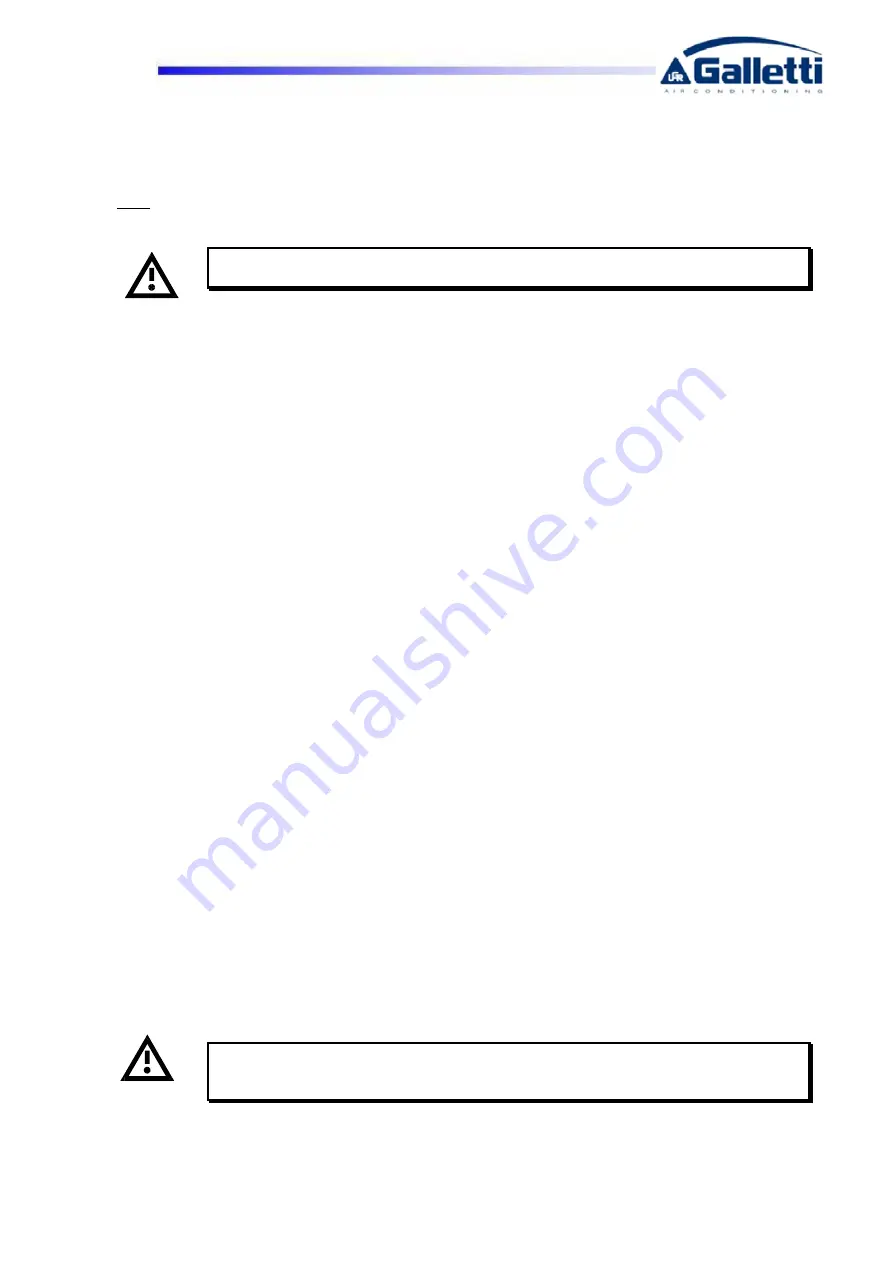
LCX
RG66010687_rev.00
23
7.3
CHECKS DURING OPERATION
- Check the phase sequence relay on the control board to verify whether the phases occur in the correct
sequence: if they do not, disconnect the unit from power supply and reverse two phases at the unit
input. any undue modifications will render the warranty null and void.
All the three-phase devices on the unit, compressor, water pump and fans (some
versions) have a set direction of rotation and were harmonized in the factory.
- Check that the temperature of the water entering the evaporator (returning from the system) is close to
the setpoint value entered. How long it will take to reach full operating capacity depends on the starting
conditions, system size and load conditions.
7.4
CHECKING THE REFRIGERANT LEVEL
- After a few hours of operation, check whether the liquid level indicator has a green crown: a yellow
colour indicates the presence of humidity in the circuit. In such a case the circuit must be dehumidified
by qualified personnel.
- Large quantities of bubbles should not appear through the liquid level indicator. A constant passage of
numerous bubbles may indicate that the refrigerant level is low and needs to be topped up.
-
A few minutes after the compressors have started up, check that the end-of-condensation
temperature shown on the pressure gauge (refer to the pressure gauge scale for the refrigerant
R410A, marked with the initials D.P. - Dew Point) is about 16-22 °C (depending on the type of unit
and charging conditions) higher than the temperature of the air entering the condenser with the fans
running at top speed.
-
Also check that the end-of-evaporation temperature shown on the pressure gauge (refer to the
pressure gauge scale for the refrigerant R410A, marked with the initials D.P. - Dew Point) is about
3.5 - 5.0 °C lower than the temperature of the water leaving the evaporator.
- Make sure the overheating of the refrigerant fluid is limited to between 5 and 8°C. To do this, you
should:
1) read the temperature indicated by a contact thermometer placed on the compressor intake pipe;
2) read the temperature indicated on the scale of a pressure gauge likewise connected to the intake
side; refer to the pressure gauge scale for the refrigerant R410A, marked with the initials D.P. (Dew
Point).
The degree of overheating is given by the difference between the temperatures thus determined.
- Make sure the subcooling of the refrigerant fluid is limited to between 4 and 6°C. To do this, you should:
1) read the temperature indicated by a contact thermometer placed on the condenser outlet pipe;
2) read the temperature indicated on the scale of a pressure gauge connected to the liquid inlet at the
condenser outlet; refer to the pressure gauge scale for the refrigerant R410A, marked with the
initials B.P. (Bubble Point).
The degree of subcooling is given by the difference between the temperatures thus determined.
Attention: all LCX units are loaded with the HFC R410A refrigerant: any top-ups must be
made by specialised personnel using the same type of refrigerant, exclusively in the
liquid phase.

